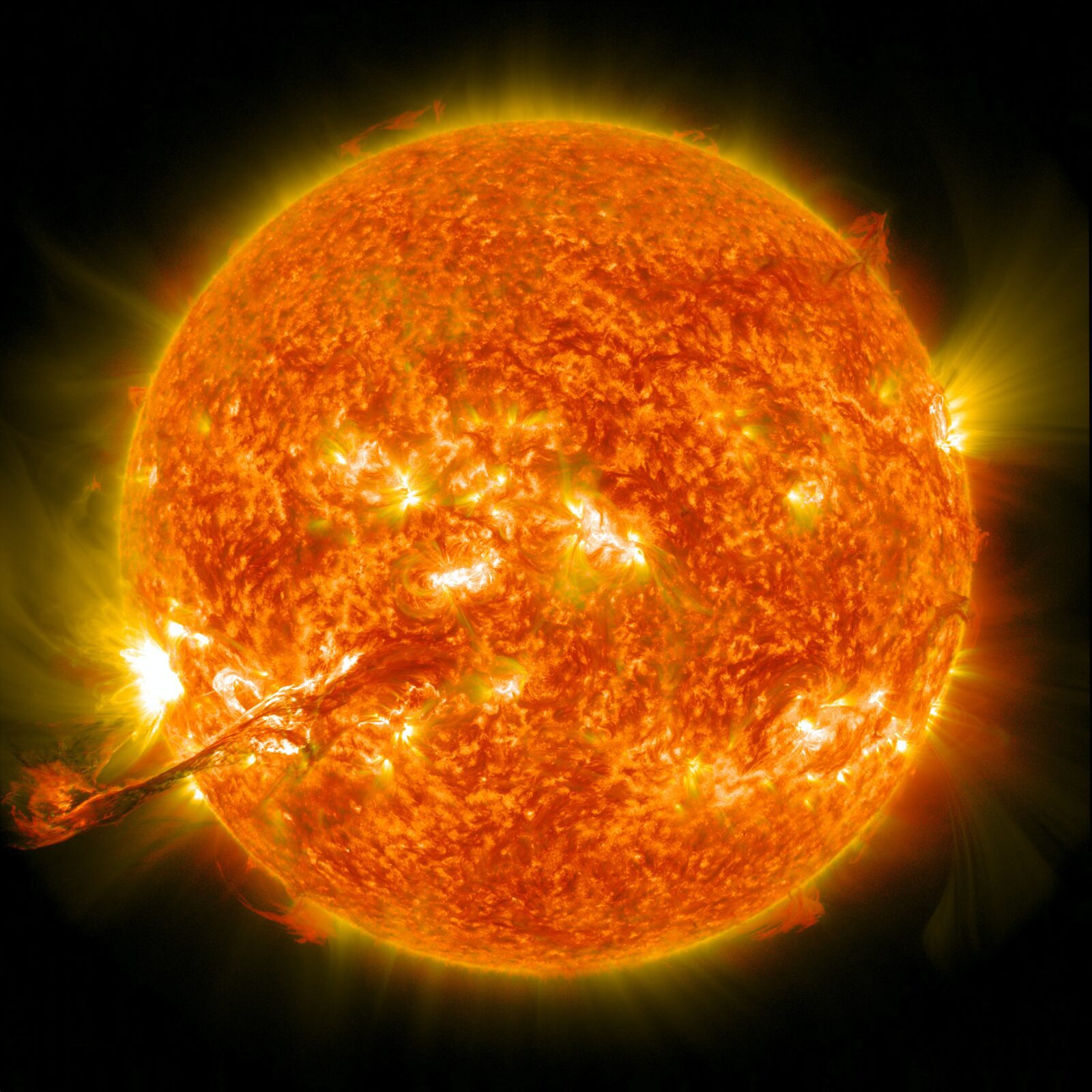The Sun is once again giving us the creeps as new solar storms might be on their way. It’s no surprise, after all, considering the tremendous temperatures that exist at our star, especially inside its core: roughly 15 million degrees Celsius.
Even if the Earth is positioned at roughly 150 million kilometers away from the Sun, that distance is practically nothing, judging by an astronomical scale. Furthermore, solar storms erupting from our star won’t find it difficult to come closer to us.
Newsweek now raises awareness about the danger of space weather becoming a problem for satellites for the next several years. What happens is that our atmosphere starts to heat up due to solar activity, hindering the activity of satellites and pushing them out of their orbits.
Major companies such as the ESA (European Space Agency) and SpaceX say that some of their satellites are sinking. For instance, SpaceX confirmed a few months ago that dozens of its satellites were destroyed.
SpaceX issued the following statement, as quoted by Newsweek:
Preliminary analysis shows the increased drag at the low altitudes prevented the satellites from leaving safe-mode to begin orbit raising maneuvers, and up to 40 of the satellites will reenter or already have reentered the Earth’s atmosphere.
Back in March, there was the danger of a coronal mass ejection, meaning a large expulsion of plasma and magnetic field from the corona of our star. At that time, SpaceWeather.com said:
Another CME is heading for Earth, and it’s a little off target. A glancing blow (or near miss) is possible during the late hours of March 23rd, according to NOAA forecasters. This will be the 3rd time in the past week that a CME has almost landed a direct hit. Even a near miss can produce bright Arctic auroras.
In the end, we must all be aware of the dark side of our Sun!











Leave a Reply